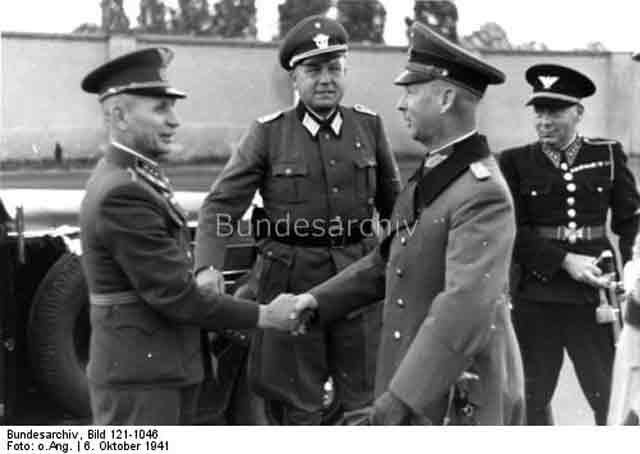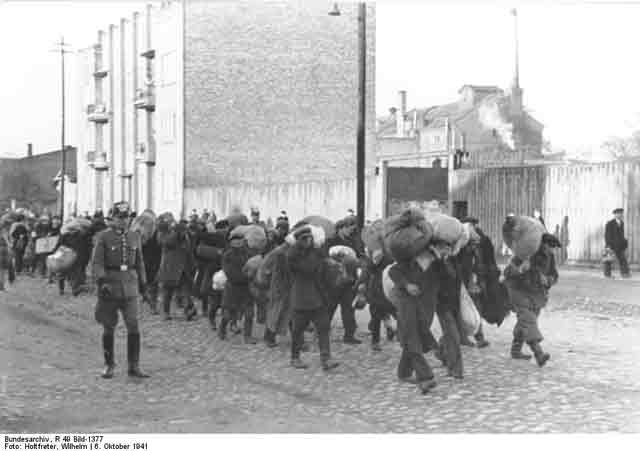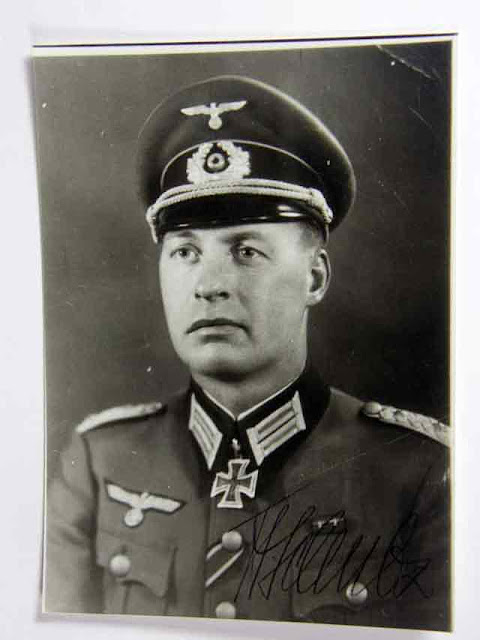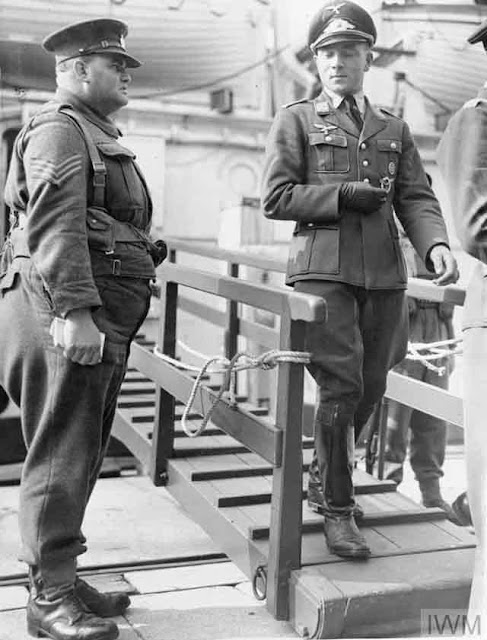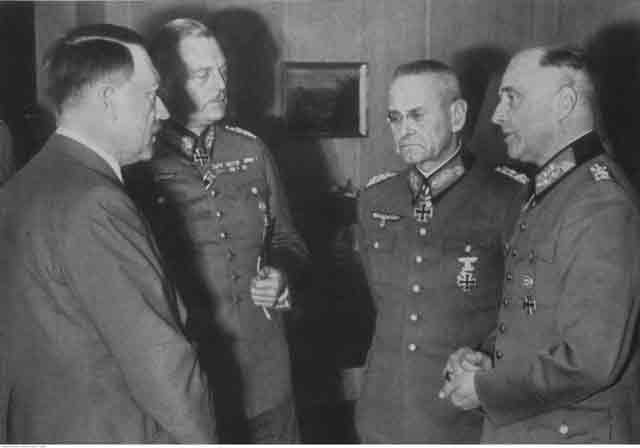Friday 3 October 1941
 |
| War damage in Riga, the capital of Latvia, on 3 October 1941 (AP). |
Eastern Front: While the Luftwaffe maintains clear aerial supremacy over the Soviet Air Force, one of the informal rules that German fighter pilots like to follow is to not stray too far past the front. While this is to some degree because their main purpose in the overall scheme things is to support the ground troops, around which the entire Luftwaffe has been developed, there is a deeper impulse at work. Quite simply, German pilots do not want to be shot down and captured. Unlike England, where Luftwaffe airmen can be assured of fairly correct treatment, the Soviet Union is not known for treating downed airmen fairly well. In fact, this is simply reciprocity for how Soviet prisoners are treated by the Germans. It is a savage war and especially savage if you are taken as a prisoner.
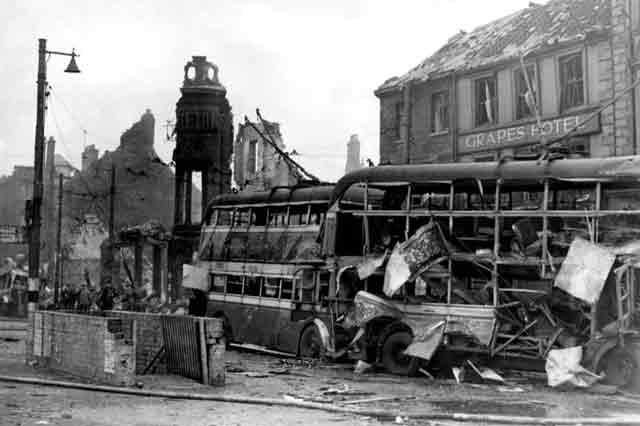 |
| Damage from a Luftwaffe attack on South Shields Market Place, 3 October 1941, the morning after the attack. |
On
3 October 1941, though, the German offensive in the middle of the Eastern Front, Operation Typhoon, is rolling toward Moscow and the Luftwaffe decides to establish aerial supremacy in that direction. So, in the morning, the German pilots of JG 51 and JG 54 engage in fierce battles around the Soviet capital. As usual, the Luftwaffe pilots do quite well and make several claims against the Red Air Force. Oblt. Erbo Graf von Kageneck of 9./JG 27, for instance, shoots down an I-18 fighter north of Vyazma for his 57th victory.
 |
| Luftwaffe ace Heinrich Hoffmann, KIA 3 October 1941. |
The day is not a complete success for the Luftwaffe, however. Oberfeldwebel (Staff Sergeant) Heinrich Hoffmann, an ace ("
experte") with 63 victories who has just moved south with his group from the Leningrad Front to support Operation Typhoon, goes missing. It is assumed that he perishes in a crash, but if not, he may wind up wishing that he had. There is conjecture that Soviet 233 IAP's (233rd Fighter Aviation Regiment) Starshiy Leytenant Sergeyev is the one to shoot him down at Shatalovo, Chernsky District, Tula Oblast (south-southwest of Moscow) on 19 October 1941, the 36th officer or soldier of the Wehrmacht so honored. south of Moscow), but this is just conjecture based upon a post-war review of loss claims. Hoffmann in his Messerschmitt Bf 109F-2 Werknummer (factory number) 12876 just disappears after engaging with several Soviet Il-2s. The loss is deeply felt, and Hoffmann posthumously is awarded the Knight's Cross of the Iron Cross with Oak Leaves (Ritterkreuz des Eisernen Kreuzes mit Eichenlaub) on 19 October 1941. He thus becomes the 36th officer or soldier of the Wehrmacht so honored, and also the first made posthumously and the first made to any non-commissioned officer.
 |
| South Shields, England on 3 October 1941 after a Luftwaffe raid by about 50 bombers. The Luftwaffe objective was the Tyne Bridge, a key link between Scotland and England. However, they attacked the River Drive bridge of a somewhat similar appearance that passed over some railway lines (this bridge was not hit). This damage was caused by bombs that overshot that target. There were 68 deaths and 117 seriously wounded, including many from a direct hit on an air-raid shelter. |
Hoffmann, obviously, was a highly valued pilot. He had the distinction of being "ace in a day" twice, just like Chuck Yeager would do for the USAAF in 1944. Of more immediate concern to his fellow pilots, though, is that Hoffmann just vanishes and is never heard from again. Pilots notice these things about their comrades. This incident reinforces the latent fear that all German pilots have about operating over enemy territory. The lesson from this and many similar incidents is clear: no matter how tempting it may be to seek out prey behind enemy lines, don't do it. Having your plane disabled there is an almost certain death sentence unless you somehow manage to sneak back to German lines. Life is short, and it becomes a whole lot shorter if the Soviets capture you.
 |
| A German anti-tank gun being hauled into position on the Russian front on Oct. 3, 1941, likely in the Operation Typhoon sector. The Russians have set fire to the buildings before withdrawing. (AP Photo). |
On the ground, Operation Typhoon is going very well, helped immeasurably by the Luftwaffe's dominance. Hermann Hoth's Panzer Group 3 reaches the Dnepr River at Kholm-Zhirkovskii and seizes two bridges intact. However, all this activity is putting a real strain on the Germans' equipment. OKH Chief of Staff General Halder notes in his daily war diary:
On Hoth's northern wing there are complaints about the deficient mobility of 1st Panzer Division. Small wonder, for the division comes straight from the battle of Leningrad, without a pause for rest and refitting. It will probably be the same story with Nineteenth and Twentieth Panzer Divisions.
The German forces are still strong despite these complaints. Hoth's panzers shrug off a weak counterattack south of the town by Soviet Group Boldin. However, the effects of Field Marshal von Leeb's decision to use his panzers in a pointless attack on Leningrad just before shifting them south to the Moscow front as ordered is having its foreseeable effect on the far more important operations on the road to the Soviet capital.
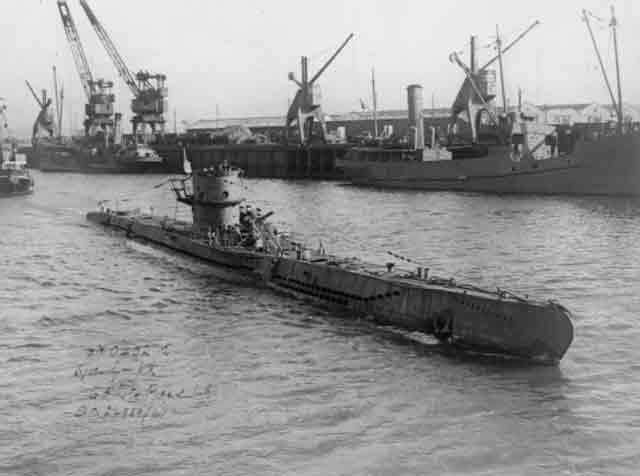 |
| Captured German U-boat U-570 arrives in Barrow-in-Furness sailed by a Royal Navy crew on 3 October 1941. The Royal Navy captured U-570 on 27 August 1941, repaired it in Iceland in great secrecy, and later put it into Royal Navy service as HMS Graph. |
General Guderian's Panzer Group 2 (the 4th Armored Division of the 24th Motorized Corps) captures Orel, 120 miles off the original front and only 220 miles south-southwest of Moscow. In retrospect, the capture of Orel can be seen as Guderian's greatest and longest-lasting triumph during Typhoon, though nobody can know that now, of course. The jaws of another gigantic Wehrmacht pincer threaten to close around the Soviet Bryansk Front (3rd, 13th and 50th Armies under the command of General Andrey Yeremenko/Eremenko), which would blow a hole in the Soviet defenses in front of Moscow. The German advance is so swift and unexpected that the 10th Panzer Division (General Fischer) captures Red Army columns moving west from the vicinity of Moscow at Mozaisk, which falls.
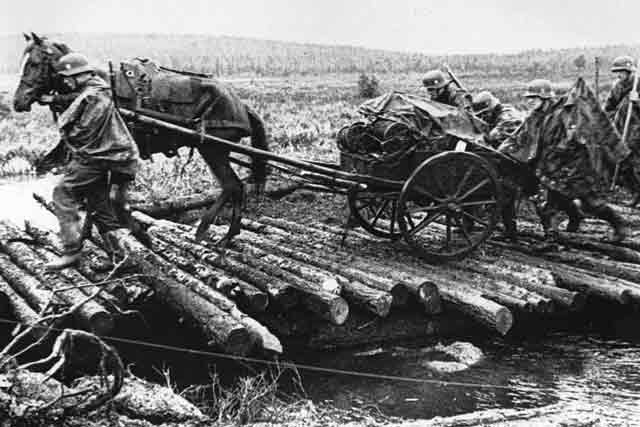 |
| Wehrmacht troops using horse-drawn carts to move their supplies near Salla, Finland during October 1941. |
Operation Typhoon is all going exactly as the Germans hoped. It is going so well, in fact, that Adolf Hitler makes a radio address from the Berlin Sportpalast to the people of the Reich declaring "… that this enemy [the Soviet Union] is already broken and will never rise again." He adds that the Soviet Union was "to a great extent" already destroyed and that Germany had the capability to "beat all possible enemies" no matter "how many billions they are going to spend." This comment suggests that Hitler has very good sources of information in high Allied circles because the Moscow Conference just ended on the 1st at which the United States pledged a billion dollars in aid - and it is quite a coincidence for Hitler to mention that sum. In any event, Hitler certain has grounds for confidence. The Soviet defense is weak and uncoordinated. However, there is still a lot of ground to cover before the actual attack on Moscow can start, so time is of the essence before the weather changes.
 |
| Battleship USS Iowa under construction at the New York Navy Yard in Brooklyn. This is looking aft from the bow area (that is the barbette for turret No. 2 at the bottom). The US Navy is in the process of building many new battleships and Essex-class aircraft carriers. |
India: Mohandas Gandhi suggests using passive resistance techniques against the British. While hardly a supporter of the Axis, Gandhi wishes to hamper the British war effort in order to convince them to leave their colonial empire in India. This does not have immediate effects, but will after the war.
 |
| Vidkun Quisling (who may be barely visible to the right) administers the oath of service to Den Norske Legion (Norwegian Legion) in Norway, 3 October 1941. |
American Homefront: Ernest Evans is born in Spring Gully, South Carolina. He becomes a renowned singer and dancer under the stage name Chubby Checker and is considered a pioneer of rock 'n roll. Among his top hits is "The Twist," which Billboard Magazine has determined is the most popular single to appear in its Hot 100 list since its debut in 1958. As of 2019, Chubby Checker is still active in the music scene.
 |
| Lincoln Borglum, who completed Mount Rushmore started by his father Gutzom Borglum, goes over the side of the mountain to mark out the final work on the face of U.S. President Abraham Lincoln in Keystone, S.D. on Oct. 3, 1941. Work on Mount Rushmore ended on 31 October 1941 (AP Photo). |
October 1941
October 1, 1941: Germans and Finns Advance in USSR
October 2, 1941: Operation Typhoon Broadens
October 3, 1941: Air Battles Near Moscow
October 4, 1941: Stalin Contemplates Defeat
October 5, 1941: Hoth Goes South
October 6, 1941: First Snowfall After Dark
October 7, 1941: Stalin Gets Religion
October 8, 1941: FDR Promises Stalin Aid
October 9, 1941: FDR Orders Atomic Bomb Research
October 10, 1941: Reichenau's Severity Order
October 11, 1941: Tank Panic in Moscow
October 12, 1941: Spanish Blue Division at the Front
October 13, 1941: Attack on Moscow
October 14, 1941: Germans Take Kalinin
October 15, 1941: Soviets Evacuate Odessa
October 16, 1941: Romanians Occupy Odessa
October 17, 1941: U-568 Torpedoes USS Kearny
October 18, 1941: Tojo Takes Tokyo
October 19, 1941: Germans Take Mozhaysk
October 20, 1941: Germans Attack Toward Tikhvin
October 21, 1941: Rasputitsa Hits Russia
October 22, 1941: Germans Into Moscow's Second Defensive Line
October 23, 1941: The Odessa Massacre
October 24, 1941: Guderian's Desperate Drive North
October 25, 1941: FDR Warns Hitler About Massacres
October 26, 1941: Guderian Drives Toward Tula
October 27, 1941: Manstein Busts Loose
October 28, 1941: Soviet Executions
October 29, 1941: Guderian Reaches Tula
October 30, 1941: Guderian Stopped at Tula
October 31, 1941: USS Reuben James Sunk
2020








